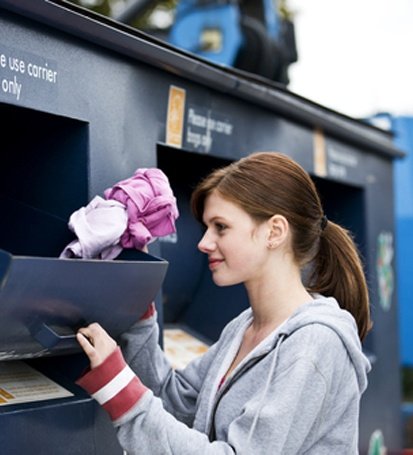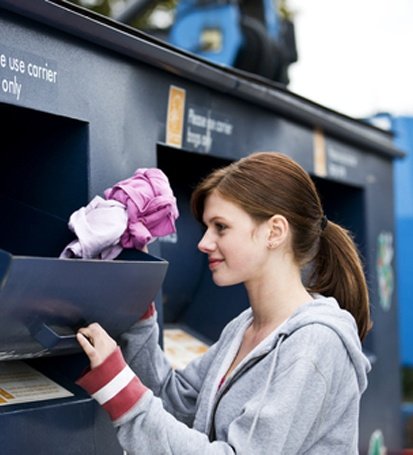The Shocking Truth About Textile Waste

Textile waste is now estimated to be the fastest growing waste stream in many countries.
This is a result of today’s fast fashion and array of inexpensive clothes, purses, footwear, towels, and more that make textiles easily replaceable – and easily disposable.

The Council for Textile Recycling estimates the average American generates 70 lbs. (approx. 32 kg) of textile waste a year. This results in a whopping 25 billion pounds of textiles sent to the landfill in a year! Australia falls close behind with experts estimating that the average Australian sends 51 lbs. or 23 kg of textile waste per person to the landfill each year. Unfortunately, within North America and Australia, 85% of textile waste goes to landfills (of which most can be recycled) and a surprising 15-16% of textile waste is recycled or donated.
To add to the issue, in the 10-year span between 1999 and 2009, the quantity of consumer’s textile waste generated in the US surged by 40%, yet the diversion rate only increased by 4%. The difference is likely even greater today. These trends come at a surprise for some. “For 30 years, we have been recycling newspapers,” says Claudia Marsales, a senior waste manager for the City of Markham, Ontario, Canada. “Textiles has just been off everybody’s radar.”
Not all hope is lost though – for several years, there was a similar issue of electronic waste ending up in landfills. California became the first state to ban electronics disposal in landfills in 2003 – and since then, 27 other states and the District of Columbia have followed. This has resulted in three times the electronics being recycled than just over a decade ago.
W hat can you do in your municipality to counteract this widespread issue?
hat can you do in your municipality to counteract this widespread issue?
- Implement and enforce regulations (i.e. ban disposal of textiles in garbage bags).
- Provide curbside textile recycling. Cities such as Austin, TX have already implemented curbside textile recycling as another step in their Zero Waste goal.
- Encourage residents to donate to Salvation Army, Goodwill, American Red Cross (USA), Value Village (Canada), and other organizations that take gently used textiles.
- Provide more donation boxes around the city in convenient locations.
- Build partnerships and collaborate with local businesses and global corporation – for example, H&M offers a take-back program.
- Encourage residents to swap clothes with friends, use them as rags to clean, etc.
- Resell fabrics to private companies to purchase. For example, Marcorp Sales (NY) will warehouse leftover fabrics and resell it to stores who sell it to aspiring designers.
- Host clothing repair workshops. For example, the City of Toronto in Canada hosts free Clothing Repairathons run by volunteers.
One positive example of a municipality taking initiative in the realm of textile waste is the City of San Francisco who launched a Zero Waste Textile Campaign in 2014 to reduce the 4,500 pounds of textiles sent to the landfill every hour. With textiles being one of the top five materials that the City sends to the landfill, the campaign aims to make an impact with the goal is of eliminating all textile waste from the landfill.
The City of San Francisco became the first city in the USA to partner with I:Col, a global solutions provider and innovator for collection, re-use and recycling of used clothing and shoes. Recycled textiles can be turned into toys, insulation, carpeting, industrial rags, furniture padding, car seats, recycled fabrics, sidewalk pavement, and so forth.
The campaign also fosters partnerships between the City and Goodwill, Salvation Army, other non-profits, retail stores, and more.